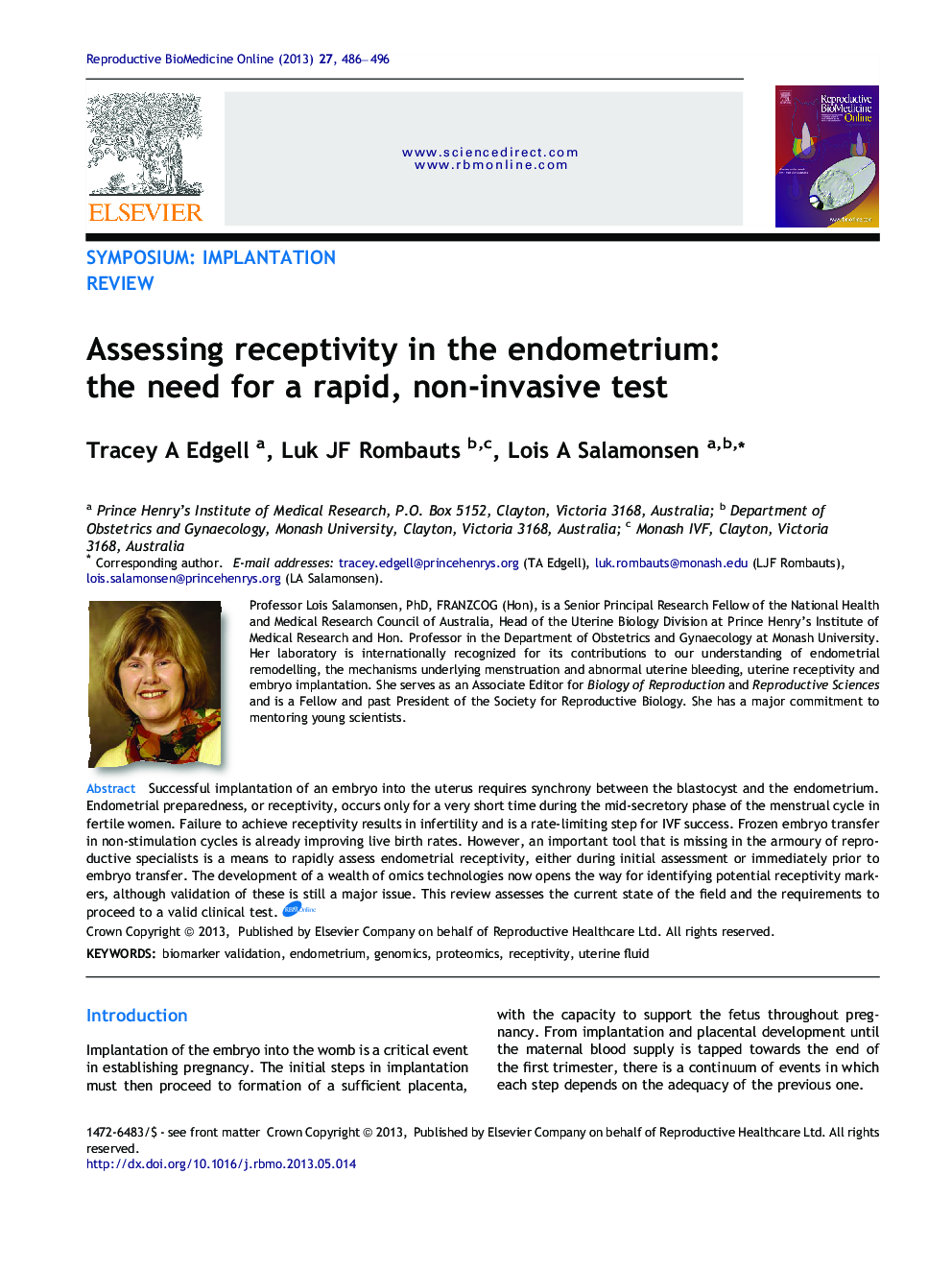| Article ID | Journal | Published Year | Pages | File Type |
|---|---|---|---|---|
| 3970493 | Reproductive BioMedicine Online | 2013 | 11 Pages |
Successful implantation of an embryo into the uterus requires synchrony between the blastocyst and the endometrium. Endometrial preparedness, or receptivity, occurs only for a very short time during the mid-secretory phase of the menstrual cycle in fertile women. Failure to achieve receptivity results in infertility and is a rate-limiting step for IVF success. Frozen embryo transfer in non-stimulation cycles is already improving live birth rates. However, an important tool that is missing in the armoury of reproductive specialists is a means to rapidly assess endometrial receptivity, either during initial assessment or immediately prior to embryo transfer. The development of a wealth of omics technologies now opens the way for identifying potential receptivity markers, although validation of these is still a major issue. This review assesses the current state of the field and the requirements to proceed to a valid clinical test.Implantation of the developing embryo into the lining of the womb (the endometrium) is a critical step in establishing a pregnancy. In each normal menstrual cycle, this lining is shed at menstruation and then rebuilt. It is only appropriately prepared for implantation for about 4 days in each woman’s cycle. On all other days of the cycle, the embryo will not implant and a pregnancy will not be started. In the field of assisted reproduction, there is a pressing need for a test to determine whether or not the endometrium is ready to accept an embryo. Since the molecular changes in the tissue are so complex, it has not been possible to identify factors that could be measured in such a test. New technologies are now enabling the search for these, by analysing thousands of genes and proteins in either small biopsies of endometrial tissue or in fluid taken from the uterine cavity. The objective is to find the factors that define the optimally prepared endometrium. Deviations from normal in these will inform reproductive medicine specialists whether the womb is likely to enable a transferred embryo to implant and form a placenta. For major impact, the test will need to be provided rapidly in the clinic. Given the increasing numbers of couples presenting with infertility, there is a strong imperative to deliver such a test.
